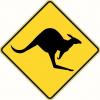I'm far from perfect at cutting dadoes by hand, and I find that I often have uneven dado bottoms (e.g., the occasional divot/deep spot). My understanding is that the most important surfaces for joinery are the edges of the dado, not the bottom - as long as I am getting a good fit on the edges, how important is a perfectly flat/smooth dado bottom?




 Reply With Quote
Reply With Quote







